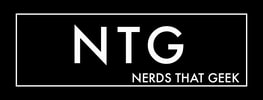Written by John Edward Betancourt
Caution: This article contains spoilers for Episode Two of ‘Queer for Fear: The History of Queer Horror’. To revisit the series premiere, click here.
When we last settled in to discuss the powerful and poignant Shudder documentary series, Queer for Fear: The History of Queer Horror, we talked at length about how the show… did a phenomenal job of educating us upon a fact that so many of us did not know. In that, horror’s true origins were supremely queer in nature, and were filled with powerful subtext regarding the queer experience at the time that horror was born. Which made for a powerful and engaging episode, one that truly educated us on horror’s real power as a genre, since that episode made it clear that this is indeed the most inclusive genre out there, since its creators expressed so much through a genre that is known for teaching us through terror. But while that alone could have carried this documentary for weeks on end, there just so happens to be so much more to explore regarding horror and its ties to the experiences of LGBTQIA+ individuals. Simply because, the trailblazing nature in which Mary Shelley and others embedded their experiences into a story, was picked up by others and used to help create some of the most iconic horror films ever made. Ones full of meaning and subtext on what those before injected into the genre. For instance, Frankenstein, ironically… is a movie filled to the brim with queer subtext, in addition to the groundbreaking elements it introduced period. Since it served as the opportunity for James Whale, who was homosexual, to really inject some truth about what it meant to be gay in that era, and learning about that here, adds incredible gravity to the power and poignance of that film, and Whale’s work as a whole since he added that subtext to all of his films. But that truly does make Frankenstein a genuinely trailblazing film, one that now has so much more to offer than its central themes of man versus technology versus ego. But of course, James wasn’t the only director to really put LGBTQIA+ individuals on display. For Alfred Hitchcock, is a director who made great use of representation in his work. In fact, his stories were filled to the brim with queer subtext. Since they oft featured men who were clearly interested in one another in a manner that went beyond friendly curiosity. Giving rise to stories that more or less spoke to how men of that era would absolutely have to be in closet to have any chance at agency and perhaps his boldest exploration regarding men and their secretive relationships at a time when America would shun any man out of the closet, was Rope. Since that is a story that clearly, especially after the analysis present here, speaks volumes to the efforts that took place in the 50s and 60s to keep such relationships a secret, with a BDSM and power dynamic twist injected in the mix as well, since Hitchcock always like to keep things a little interesting. But while it was indeed fascinating to learn about Hitchcock’s role in creating iconic moments in queer horror through his own curiosities, oddly enough… Hitchcock’s work would give rise to another icon of queer horror. After all, Psycho is a story that at first glance, appears to be nothing more than a movie about a broken man, in the vein of Ed Gein, who obviously needed severe mental health care. But in reality, it is now obvious via this documentary that Anthony Perkins’ portrayal of Norman Bates, had something far deeper to it. In that, it spoke to Anthony’s own struggles with his sexual identity and this film and so many others in the Psycho franchise, allowed for Anthony to work out his feelings on his sexuality and become an icon in the process. Simply because his struggles on screen, would help others by telling a powerful tale regarding how difficult it was to really be oneself back in the day when queer culture was viewed in an even more negative light than it is now. All of which makes this episode, another powerful chapter in this journey. Simply because it truly put on display how the ravages of the past, made being an LGBTQIA+ individual, pure hell, where everything about the true and pure essence of a queer person, had to be kept a secret and had to be limited to gazes and innuendo in public out of fear. But thankfully, these films were able to provide anyone suffering from those frustrations with catharsis and fulfillment. For they were now seen and did not feel alone, making this era of horror history, quite pertinent and important since these stories were but one of the handful of ways to express such feelings and well, now that we have reached the end of this incredible segment of horror history, it will be fascinating to learn how the queer experience and horror worked together in eras that were starting to rightfully acknowledge the existence of LGBTQIA+ individuals and deconstruct the stereotypes that so many incorrectly embraced. Until next time.
0 Comments
Leave a Reply. |
Archives
April 2025
|
|
© 2012-2025, Nerds That Geek LLC.
All Rights Reserved. |
uWeb Hosting by FatCow

 RSS Feed
RSS Feed
